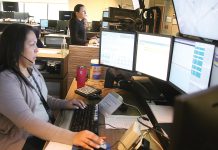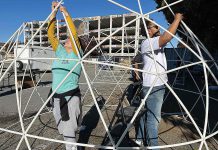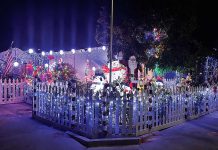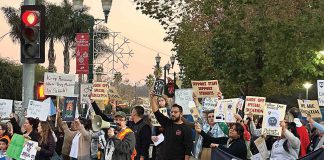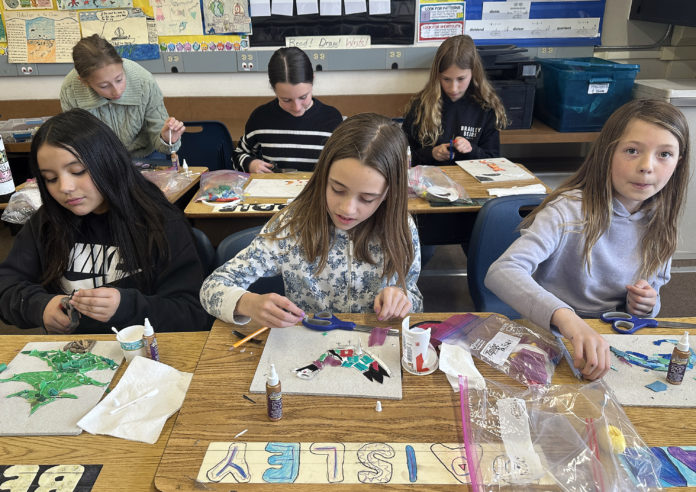
Slowly and painstakingly, more than 30 students in Elise Jacobs fifth-grade class at Bradley Elementary School trimmed bits of plastic of varying textures and colors, and then glued into place on the mosaic artwork on their desk. Little by little, their menagerie of orcas, flowers, fish and birds took form.
And while the glue and a small handful of supplies were purchased for the lesson, the plastic was virtually free after the students collected it themselves from beaches, parks and recycle bins.
That was precisely the lesson artist Shannon McCarthy was hoping to get across: something as pernicious and persistent as plastic pollution can be turned into something beautiful.
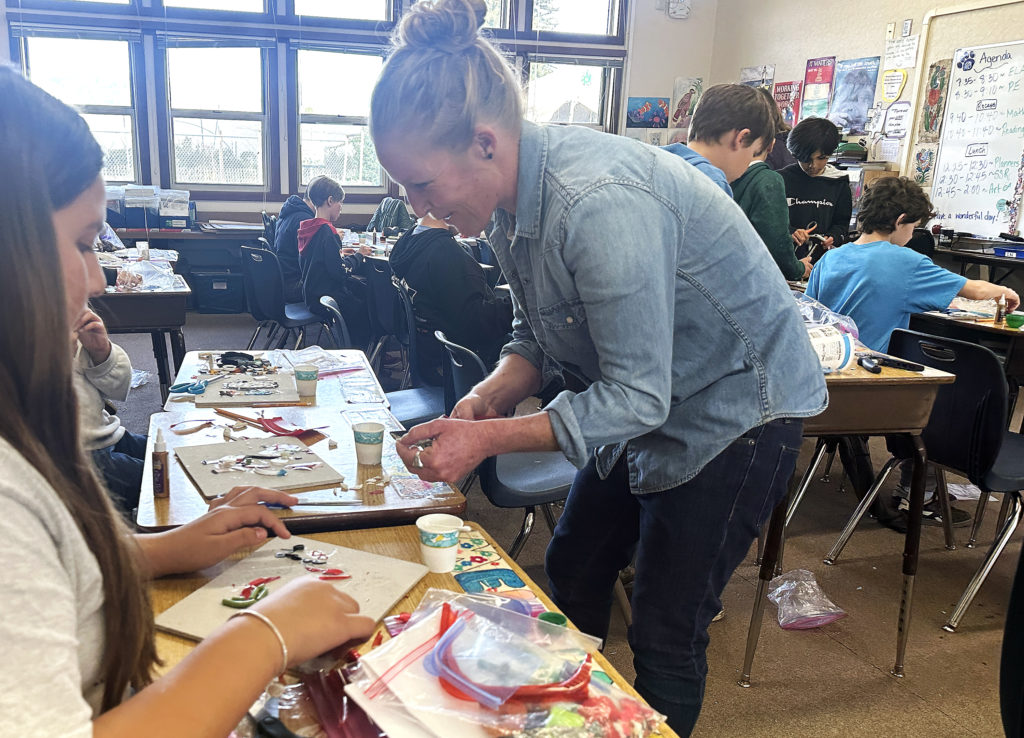
“During the process there is such a connection with holding the material and seeing it change from a piece of trash to this almost treasure.”
In learning that lesson, McCarthy hopes to teach young people to be aware of the amount of plastic they use, and hopefully to reduce it.
“Art is such a powerful way to communicate what’s happening on our planet,” she said. “It also empowers individuals that they have power over their environment, and can change things for the positive when things seem so negative, and to use art to spread the word that plastic doesn’t have to have a single use and be thrown away.”
McCarthy, who led similar lessons in Hawaii, has become known for her intricate artwork featuring tiny bits of plastic she finds on beaches.
Paisley Bloomstrand chose to create an image of a chicken with colorful bits of plastic in her first such project.
“I like it because it is creative and it is a good way of recycling all this stuff that we world normally throw away,” she said. “I think this is a good project.”
That was the inspiration for her Sustainable Environmental Art (SEA) lessons.
Jacobs said that the activity fit perfectly into her day, since the class normally studies either science or social studies during that time slot.
“Since this covers both, it’s perfect,” she said.
When Corralitos Woman’s Club member Judy Stephenson saw McCarthy’s work during an Open Studios Tour late last year, she knew she wanted the organization to sponsor a project.
Stephenson pitched her idea, and the club gave her a modest amount of money to make it happen. Then she reached out to McCarthy.
“I said, ‘this is going to sound weird, but I only have $1,000. Can we work together?’” Stephenson said.
After seeing how engaged the students were, Stephenson hopes to see the lesson expand to more classrooms and schools.
“This is the hope,” she said. “This is the dream.”


